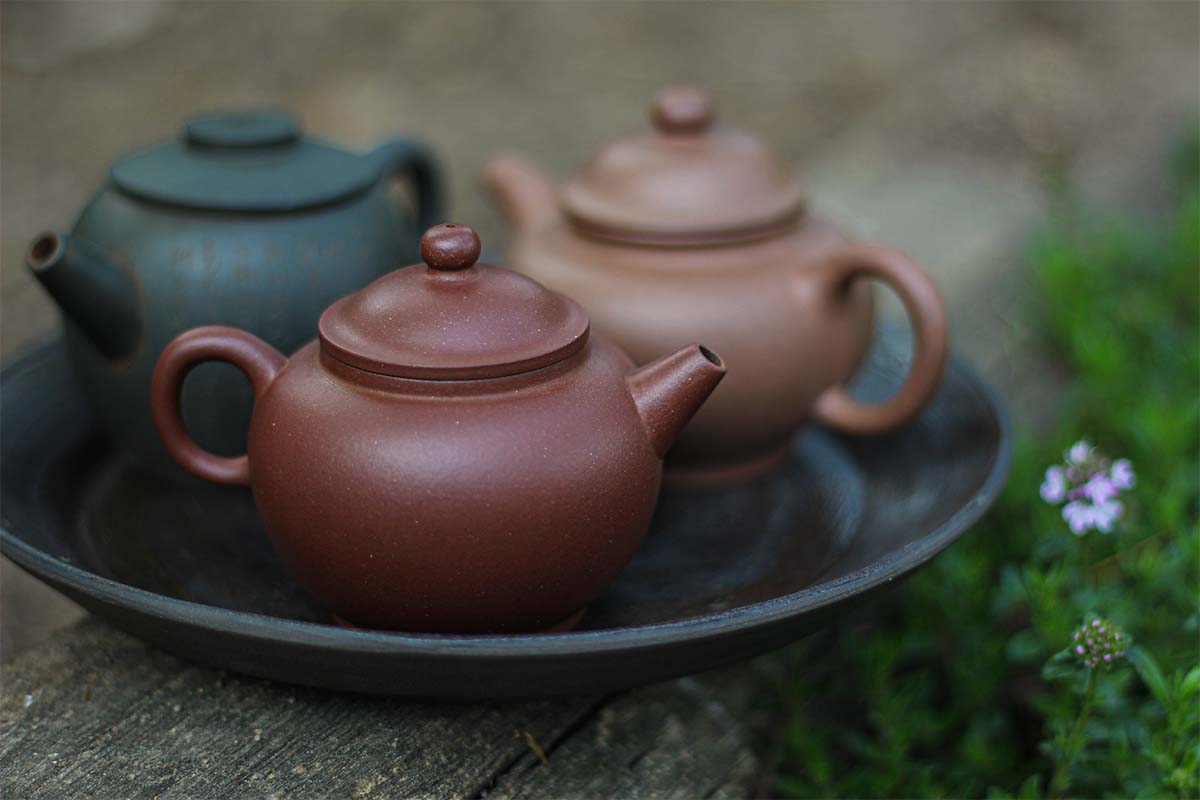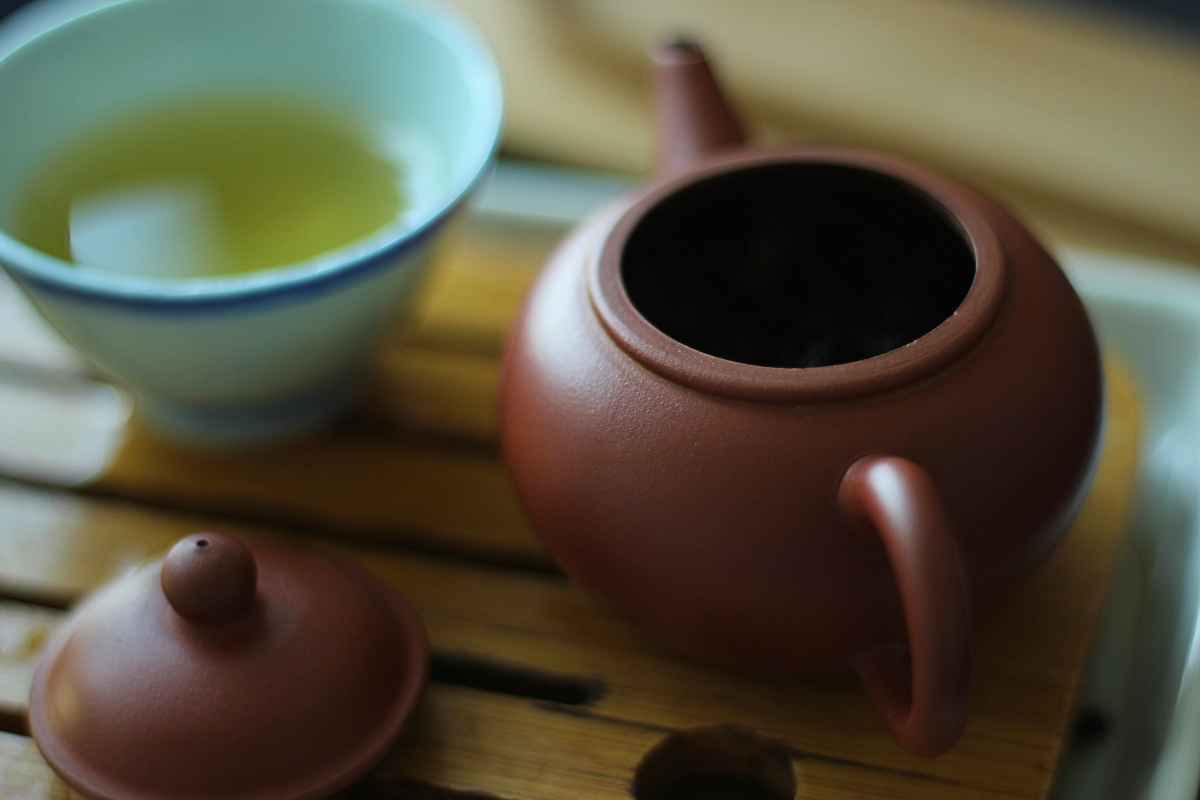Everyone who has seen an Yixing teapot might wonder why they are so small. Western teapots are big and allow for easy tea brewing for a big group of people. Yixing teapots are usually a lot smaller and there are a couple of reasons for this. This article lists the most important reasons why Yixing teapots are smaller than western teapots.
Yixing teapots are small because people needed a more economic option to brew their tea. Zisha clay also has some limitations so it’s almost impossible to make large teapots. A final reason for the small size of Yixing teapots was the emergence of oolong tea. Small Yixing teapots allow for extracting the best qualities out of the tea leaves.
Yixing teapots
Yixing teapots are a type of clay teapots from the city of Yixing in China’s Jiangsu province. These teapots have been associated with tea for centuries because of their remarkable qualities. The minerals in the clay have the ability to improve your tea.
These teapots form a perfect union with Gong Fu Cha, which is the Chinese Tea Ceremony. It involves using a considerable amount of tea for a low amount of water and steeping it for a short time.
The clay is called zisha clay and is also referred to as purple clay. It’s a porous type of clay so the teapot slowly absorbs tea oils over time and these build up to affect later brews. That is why it’s recommended to have one type of clay teapot for each (sub)type of tea.

Don’t know where to buy tea online? I made a list of over 300 online tea shops and I keep updating it regularly. You can check it over here
There are several types of zisha clay, but the main categories are zini, hongni and duanni clay. These clays (and their subcategories) are used to make Yixing teapots and have slightly different properties. However, the teapots are usually around 90-150ml, which is a lot smaller than your average western teapot.
The small size of Yixing teapots
During the Ming and Qing dynasties in China, it was not uncommon to use large teapots that required large amounts of tea and water for a tea session. This was around the time when western countries began trading with China and they saw that this was the most common brewing method.
They took this brewing method home and that is the main reason people in the west still use large teapots with large cups and a longer steep time.
Slowly over time, people in southern China and especially in the Chaozhou region started using smaller teapots for several reasons. There were economic reasons, the characteristics and limits of the clay itself and the emergence of oolong tea also had an effect on the development of Yixing teapots.
Economic reasons
The brewing methods that were common in the Ming and Qing dynasties were not that economic because they required large amounts of tea. Most people in southern China were rather poor back then so they needed a better option to enjoy a nice cup of tea.
When they brewed tea in a large teapot and large cups, they had to drink it rather fast because it would get cold otherwise. This meant that they had to drink it in a relatively short time and they couldn’t really enjoy their tea for a whole afternoon.
They quickly realized that they could get more tea out of tea leaves if they put them in a smaller pot and do multiple short infusions. In essence, this is what the Chinese Tea ceremony is about: a high leaf to water ratio with multiple short infusions.
When they started brewing tea like this, they could get many more infusions out of the tea leaves and enjoy it over a longer time. In order to do this, they needed small teapots and this quickly became the standard way of brewing tea in most parts of China.
Zisha clay
Another reason for the small size of Yixing teapots is the material from which they are made: zisha clay. This clay can be used to make teapots, but making large teapots with it is a lot more difficult, if not impossible. Zisha clay is a wonderful material to use, but it has some limitations.
The teapot needs to be made but it also needs to be fired before it can be used. Firing the teapot also has an effect on the clay because some clays shrink quite a bit and large teapots have a higher chance to break during firing; especially zhuni/hongni teapots.
The emergence of oolong tea
A final reason for the emergence of small Yixing teapots is the rise of oolong tea. The Chinese Tea Ceremony is used to get the most out of tea leaves and it requires great skill to do it successfully.
Producing oolong tea requires great mastery as well and it takes decades to truly master it. There are many different steps in the production process and it takes a long time to get them all right.
Once a tea producer has mastered the production process, he has created a magnificent tea. That is why they needed a suitable brewing method. They wanted to honour the skill and craftsmanship that produced the tea so it needed to be brewed properly.
Gong Fu Cha (the Chinese Tea Ceremony) is a complicated brewing method and was perfect to brew oolong tea. Oolong tea became more popular so more and more people got interested in brewing tea Gong Fu. This meant that they started using smaller teapots because that is one of the basic tools of the Chinese Tea Ceremony.
Using a smaller teapot and smaller cups allows for more focused tea and the ability to bring out the best qualities of the tea. Drinking from smaller cups also makes sure you focus more on the tea you’re drinking because you’re forced to take smaller sips.




